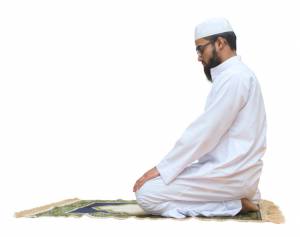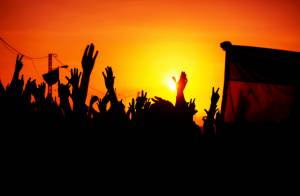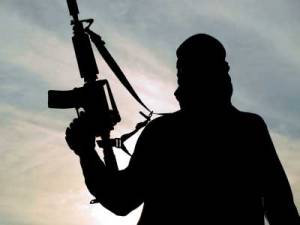Spirituality in the Twitter Age
Twitter is one of the predominant social media platforms available today. The company was founded in 2006 and has grown exponentially since then. More than 350,000 tweets are posted per minute, and over 500 million are sent per day. In addition to everyday people, politicians, movie stars and spiritual leaders are also finding it an effective way to communicate with and inspire their followers.
Dalai Lama: @DalaiLama – 11.8 M followers
The Dalai Lama is a Buddhist monk who won the 1989 Nobel Peace Prize. He has one of the largest Twitter followings of any spiritual leader and tweets every couple of days. His posts are filled with messages of peace, happiness and compassion. Some recent tweets are:
- “The use of force and violence inevitably entails unanticipated consequences, but rarely yields a solution.” – August 21
- “To create a happier humanity we have to pay more attention to our inner values, whether we are religious or not.” – August 3
- “To cultivate genuine compassion we need to take responsibility for our own care and have concern for everyone’s suffering, including our own.” – July 27
Pope Francis: @Pontifex – 6.89 M followers
The papacy of Pope Francis began on March 13, 2013. He has had a profound effect on the religious and secular alike, and is proving to be a religious force with whom to be reckoned. The pontiff has also amassed 6.89 million Twitter followers, which is a far cry from his predecessor’s (Pope Benedict) 12,700. Every two to four days, he tweets messages of benevolence and God’s love. Some recent tweets are:
- “A Christian too attached to riches has lost his way.” – August 25
- “Reading the Gospel each day helps us overcome our selfishness and to follow Jesus our teacher with dedication.” – August 21
- “Hospitality in families is a crucial virtue today, especially in situations of great poverty.” – August 1
- “We are all sinners. Let us be transformed by God’s mercy.” – August 8
Joel Osteen: @JoelOsteen – 3.89 M followers
Joel Osteen, a preacher and New York Times best-selling author, is the pastor of the biggest Protestant church in America. Every week, more than 44,000 people fill a former basketball area to watch him live, with another seven million tuning in on television. Osteen is also extremely active on Twitter and typically posts twice per day. His messages are inspirational and motivational. Some recent tweets are:
- “You were created to overcome every obstacle, to rise above every challenge. Not just to survive – to thrive!” – August 26
- “You may have a negative past, but you don’t have to have a negative future. This is a new day. Make the most of it.” – August 25
- “You didn’t just happen to show up on planet earth. God had a plan for you long before you arrived.” – August 21
Deepak Chopra: @DeepakChopra – 2.57 M followers
Deepak Chopra is a renowned author and public speaker; he is also a doctor and vocal proponent of alternative medicine. Chopra was born in India and immigrated to the United States in 1970. He is prolific on Twitter (presumably, he has someone helping him), sometimes tweeting up to eight times per day. He interacts with his followers and frequently retweets messages. His posts are filled with New Age spirituality. Some recent tweets are:
- “Each one of us is created with an inherent light within – a light made up of limitless spiritual power.” – August 27
- “Yoga is the connection to the source field beyond space and time.” – August 25
- “A compassionate heart, tapping into the inner ocean of unconditional acceptance, flows in waves of love.” – August 23
Much can be said in a 140-character tweet. Spiritual leaders who have jumped on the Twitter bandwagon are making the most of every post.
To Pray or Not to Pray? The Canadian Supreme Court’s unanimous mid-April ruling banning prayers before city council meetings in Saguenay, Quebec, has stirred up quite a debate across the country. Many municipalities believe the decision is now of the law of land and are following suit. Others are suspending the practice and taking time to debate the matter, and some are ignoring the ruling all together. There are a number of different alternatives being considered.
The Canadian Supreme Court’s unanimous mid-April ruling banning prayers before city council meetings in Saguenay, Quebec, has stirred up quite a debate across the country. Many municipalities believe the decision is now of the law of land and are following suit. Others are suspending the practice and taking time to debate the matter, and some are ignoring the ruling all together. There are a number of different alternatives being considered.
The Lord’s Prayer
Over the years, many municipal meetings have begun with the recitation of The Lord’s Prayer. This tradition likely evolved out of Canada’s Anglican and Roman Catholic heritage. However, today the country is much more spiritually diverse. It is difficult to dispute the religious sentiment of the text which reads:
“Our Father, who art in heaven, hallowed be thy Name; thy Kingdom come, thy will be done, on earth as it is in heaven. Give us this day our daily bread and forgive us our trespasses, as we forgive those that trespass against us. Lead us not into temptation, but deliver us from evil. For thine is the kingdom, the power, and the glory, forever and ever. Amen.”
House of Commons Prayer
In 1927, the House of Commons formalized the practice of opening sessions with its own prayer. There have been some changes made to the wording over time. The current language was implemented in 1994 and is still being used today. The House of Common is independent from the country’s judicial branch and does not have to adhere to Supreme Court rulings, unless the representatives choose to do so. The House of Commons prayer is recited before the public is allowed in chambers and TV cameras turned on. It reads as follows:
“Almighty God, we give thanks for the great blessings which have been bestowed on Canada and its citizens, including the gifts of freedom, opportunity and peace that we enjoy. We pray for our Sovereign, Queen Elizabeth, and the Governor General. Guide us in our deliberations as Members of Parliament, and strengthen us in our awareness of our duties and responsibilities as Members. Grant us wisdom, knowledge, and understanding to preserve the blessings of this country for the benefit of all and to make good laws and wise decisions. Amen”
Generic Invocation
Another option is for municipalities to agree on a nonreligious “invocation.” One that has been proposed by Owen Sound, Ontario resident Terri Hope is:
“As we approach our work here today, may we be mindful of our role as leaders in Owen Sound, a city of great beauty and opportunity. As we face our decisions, may we be guided by strong ethics, wisdom, fairness and sound knowledge. May we never forget the trust placed in us by the people of Owen Sound.”
Observe a Moment of Silence
A number of city councils opted prior to the April 15 Supreme Court decision to have a moment of silence instead of a prayer. This alternative appears to be gaining steam after the ruling. Some municipalities have adopted the practice as an interim step while they consider the implications and alternatives to the recent ruling. Observing a moment of silence can allow time for personal, independent reflection, regardless of one’s religious beliefs.
Skip It Altogether
There are some municipalities that believe that the Canadian Supreme Court is the ultimate authority of these matters, and the affairs of church and state should be separate. They have chosen to eliminate prayers, and anything comparable, and get straight to the business at hand. Over time, it is possible forgoing a prayer, invocation or moment of silence will become standard practice.
The Supreme Court of Canada’s April 15 decision to ban prayers before city council meetings in Saguenay, Quebec, is bound to have a wide-ranging impact. It remains to be seen what the specific ramifications will be.
The World’s Fastest Growing Religion May Surprise You
Islam is the fastest growing religion in the world and in Canada as well. It is second only to Christianity in its number of followers. Muslims are believers of Islam. According to the Pew Research Center, 23 percent of the world’s population are practicing Muslims. There are slightly more than 1 million Muslims in Canada, which equates to approximately 3.2 percent of the country’s citizens.
Islam Religion Around the Globe
Islam is the majority religion in a number of countries in the Middle East, Africa and Asia. In the following places, over 85 percent of the population is Muslim:
- Afghanistan
- Bangladesh
- Indonesia
- Iran
- Iraq
- Morocco
- Pakistan
- Saudi Arabia
- Turkey
- Yemen
Muslim Denominations
Sunni and Shia are the two main Muslim denominations. The most popular is Sunni and 75-90 percent of followers of Islam are Sunni. Shia Muslims represent the remaining 10-20 percent. The third denomination is Ahmadis and is followers constitute approximately 1 percent of all Muslims.
Islam in Canada
There are Muslims living all across Canada, but approximately 40 percent reside in the province of Ontario. Muslims make up almost 8 percent of the population of Toronto. Following are the cities with the largest Muslim populations, in order:
- Toronto
- Ottawa
- Montreal
- Vancouver
- Calgary
- Edmonton
- Windsor
- Winnipeg
- Halifax
Muslim Holidays
Eid al-Fitr falls at the end of Ramadan, which is a month-long period of fasting and one of the most sacred times of year on the Islamic calendar. The Arabic translation for Eid al-Fitr is “festival of breaking the fast.” This holiday celebrates the conclusion of Ramadan and lasts from one to three days. It is customary to wear new clothes and donate money to charity. No fasting is allowed on Eid al-Fitr, and a celebratory feast takes place.
Eid al-Adha means “festival of the sacrifice” and occurs during Dhu al-Hijjah. Dhu al-Hijjah is the last month of the Islamic year and when the annual Hajj pilgrimage to Mecca takes place. All Muslims must make this journey once in their lifetime if they are able. Families sacrifice animals on Eid al-Adha and distribute the meat to friends, neighbors and the poor.
Famous Canadian Muslims
There are well-known Canadian Muslims in many different professions including journalism, politics, entertainment and hockey. They include:
- Naheed Nenshi – current mayor of Calgary
- Yasmin Ratansi – first and only Muslim female Member of Parliament
- Haroon Siddiqui – journalist and former editor of the Toronto Star
- K’naan – singer-songwriter
- Zarqa Nawaz – creator of the Canadian sitcom Little Mosque on the Prairie
- Nazem Kadri – player for the Toronto Maple Leafs
Headwear Controversies
Canadian Muslims have been involved in several head-covering controversies over the years.
Sikh immigrant Baltej Singh Dhillon was the first Mountie to wear a turban. The government formally lifted the ban on Sikh Mounties wearing turbans in 1990 after Dhillon argued his religious rights were being violated. This decision caused many protests.
When a Quebec judge declared women who wear niqabs, which are veils that cover everything but the eyes, could vote in provincial elections, there was a tremendous backlash. At the urging of politicians, the judge later reversed his decision. The official policy currently listed on the Canadian elections website is:
“If the elector agrees to remove their face covering, the election official will follow regular voting procedures.
“If the elector does not wish to remove their face covering, the deputy returning officer will advise the elector that they must provide two pieces of authorized identification, one proving their identity and the other proving their identity and address, and then take an oath attesting to their eligibility to vote.”
Over 1.6 billion people worldwide identity as Muslim, and that number continues to grow at a fast pace. There are an ever increasing number of Canadian Muslims, and they are becoming more and more a part of the fabric of the country.
Religious Equality in Canada
The debate over religious equality has been a hot topic in Canada. While approximately 67 percent of the country’s citizens identify themselves as Christians, that still leaves a large part of the population to embrace other forms of spirituality (or claim no religious affiliation whatsoever). Issues such as employers providing time-off for non-Christian holidays and the legality of prayers before municipal meetings have both been issues.
Celebrating Non-Christian Holidays
Having time off to celebrate religious holidays is important to many people. The majority of Canadians receive paid days off for the following statutory holidays. Some are nationwide and a few are province specific.
- New Year’s Day
- Good Friday or Easter Monday
- Victoria Day (except NB, NS, PE, NL)
- Fete Nationale (Quebec only)
- Canada Day
- Labour Day
- Thanksgiving (except NB, NS, PE, NL)
- Christmas Day
While the majority of these dates are secular, two are religious (Easter and Christmas). Christians don’t have to request time off for these days because they are automatically included in the list of statutory holidays. People of different religions often need to ask for time off for their holy days since they are not usually recognized vacation days in Canada. In most situations, employers now have to accommodate the religious beliefs of eligible employees and grant them leave, if requested.
Legal Precedents
The Canadian courts require companies to allow employees who are not Christian time to celebrate their own holidays, as long it does not place any unreasonable burden on the employer. Federally regulated industries like banks, telecom companies and airlines must comply with this as well under the Canadian Human Rights Act. There a number of ways Canadian employers can accommodate these requests including switching work schedules and offering floating vacation days. There have been several milestone lawsuits that have reinforced this view.
Commission Scolaire Regionale de Chambly v. Bergevin
This case involved three Jewish teachers who requested time off for Yom Kippur, the most important holiday of the Jewish year. The leave had been approved by the school board, but without pay. The Canadian Supreme Court ultimately ruled the teachers should be paid for the time off, and doing so did not impose undue hardship on the school district.
Ontario Human Rights Commission and O’Malley vs. Simpson-Sears Ltd.
Theresa O’Malley, a Seventh Day Adventist, refused to work on Saturdays because it was the day her religion observed the Sabbath. She was subsequently fired from her job. The case made it to the Supreme Court of Canada and the justices unanimously ruled in favor of Ms. O’Malley, and ordered her employer to pay back wages.
Employers’ Undue Hardship
Employers do have a means of recourse. They can claim accommodating these requests places an undue hardship on their business or organization. However, it is relatively difficult to successfully argue these cases, because most Canadian companies routinely adjust work schedules based on holidays or sick days.
Prayers at City Council Meetings
In further support of the need to provide greater religious equality in Canada, the Canadian Supreme Court unanimously ruled on April 15 to ban reciting prayers prior to city council meetings in Saquenay, Quebec. The decision read, “The state must instead remain neutral in this regard. This neutrality requires that the state neither favour nor hinder any particular belief, and the same holds true for non-belief. It requires that the state abstain from taking any position and thus avoid adhering to a particular belief.” A number of other municipalities have already followed suit and done away with their pre-meeting prayers as well. It will take time to understand the full impact this ruling will have on religious equality in Canada.
Canada is considered one of the most religiously tolerant countries in the world. However, it has taken time and lawsuits for non-Christian Canadians to attain greater legal support for exercising their beliefs.
Canadian Wedding Traditions, Both Old and New All couples are different, and a wedding that reflects their personalities and preferences is a common goal. In Canada, many wedding customs incorporated in the celebration are influenced by European-Christian, particularly British, traditions.
All couples are different, and a wedding that reflects their personalities and preferences is a common goal. In Canada, many wedding customs incorporated in the celebration are influenced by European-Christian, particularly British, traditions.
The White Dress
A conventional white wedding dress, purchased specifically for the occasion, is still the most popular choice of Canadian brides. The custom of wearing white started in the Victorian Era and symbolized purity.
Something Old, Something New
It is considered good luck for brides to wear “something old, something new, something borrowed and something blue.” The tradition originated from an old English rhyme. The fifth and final item referenced in the rhyme, not usually adhered to outside of Britain, is “a sixpence in your shoe.”
- “Old” stands for continuity. Some brides choose to wear a family heirloom.
- “New” represents optimism for the future. The wedding dress or shoes can be two examples.
- “Borrowed” represents borrowing joy from a happily married couple in hopes it rubs off on your own relationship. A piece of jewelry or handkerchief are items that can be borrowed.
- “Blue” is meant to represent loyalty and fidelity. Brides sometimes wear blue garters or tie a blue ribbon in their bouquet.
- “A sixpence in your shoe” is the desire for prosperity and good fortune.
The Groom Stands on the Right
Many couples still choose to get married in a church, but there are numerous other options including gardens, beaches and the homes of family and friends. No matter where the ceremony occurs, it is customary for grooms to stand on the right side and brides on the left while they exchange vows. This tradition evolved in Europe centuries ago. Grooms needed easy access to their swords in the event someone attempted to abduct their brides. While there is no longer a worry of brides getting kidnapped at the altar in modern day Canada, the custom has endured.
Bridal Party
Having a bridal party is an Anglo-Saxon tradition. Grooms would have knights assist their brides in getting to ceremonies safely. The knights would also escort couples back home to prevent them from being attacked and their dowries stolen.
Bouquet Toss
It is traditional for a bride to carry a bouquet of flowers and toss it towards all the single women after the wedding. Whoever catches it is supposed to be the next to marry. This custom originated from brides wanting to protect their dresses from unmarried women who would rip bits off the gowns for good luck. Brides started throwing pieces of bouquets towards them so they would have something pretty and not try to tear off their dresses.
Honeymoon
Many couples go on a honeymoon after they are married. The term “honeymoon” comes from a traditional drink couples would consume. They would drink mead wine, which was made from fermented “honey” and water, for a month after their wedding. The month represents a full cycle of the “moon.”
New Wedding Trends
While traditions are practices and rituals that have stood the test of time, trends are much more recent and easily come and go. Here are some current wedding trends.
As an alternative to the big wedding cake, it is becoming popular to offer individual bite-sized desserts. They can be served off a tray at each table.
Metallic accents are popping up everywhere. Foil on invitations, floral table decorations in gold and silver vases and metallic specks on desserts are all ways to add some sparkle to the occasion.
Instead of traditional buffets or sit down dinners served by waiters, more couples are ditching convention when it comes to cuisine and letting their guests interact with chefs.
Weddings often include traditions. However, it is also fun to mix some new trends into the festivities.
The Religion of Hockey Hockey is religion to many Canadians, but the actual religious beliefs of the men who play the game are often a much more taboo topic. Hockey players, with a few notable exceptions, are some of the least vocal athletes when it comes to professing their spirituality.
Hockey is religion to many Canadians, but the actual religious beliefs of the men who play the game are often a much more taboo topic. Hockey players, with a few notable exceptions, are some of the least vocal athletes when it comes to professing their spirituality.
The Influence of Religion in Other Professional Sports
Many other professional sports teams welcome displays of religion. It is not uncommon for NFL players to participate in a pre-game prayer or an on-field post-game one on bended knee. Similar demonstrations of faith are also prevalent in the NBA and MLB. NASCAR drivers take part in an invocation before each race. Quarterback Tim Tebow and basketball superstar Jeremy Lin are both devout Christians and don’t hesitate to let others know.
The Impact of Harold Ballard
The inherently reserved Canadian culture is one reason hockey players may be less likely to readily acknowledge their religious beliefs. Another is the comments made by deceased Maple Leafs owner Harold Ballard in the early 1980s. He publicly berated centre Laurie Boschman numerous times, including after a post-season loss to the New York Rangers, claiming his born-again Christian beliefs made him “soft.”
The incident became a big news story and the 20-year-old Boschman had to defend his spirituality to the international media. He did not back down and said the Maple Leafs owner was ignorant about Christianity. However, hockey is a tough guy’s sport, and the impact of Ballard’s criticism left a lasting impression. Boschman more than proved him wrong and went on to a successful career playing for Edmonton, Winnipeg, New Jersey and Ottawa, where he was named team captain. Today, Boschman organizes chapel programs for the NHL and is the Senator’s team chaplain.
NHL Exceptions to the Rule
There are a handful of NHL players who are very open about the role of Christianity in their lives. Religion has also become more mainstream in hockey than it was in the days of Harold Ballard.
Mike Fisher was born in Ontario and is a forward for the Nashville Predators. His wife is Grammy-winning country singer Carrie Underwood. Fisher was raised in a devout Christian household and has always been outspoken about his spirituality. His uncle was also the team chaplain for the Toronto Blue Jays. The book Defender of the Faith: The Mike Fisher Story by Kim Washburn discusses the role of religion in his life and how he also always puts God first.
Saskatoon-born goalie Dan Ellis had a different upbringing than Fisher. His parents divorced when he was 11, and he was a troubled teenager. The turning point came when his father signed him up for a Christian hockey camp. From that point on, religion and hockey were the most important things in Ellis’s life. He currently plays for the San Antonio Rampage and sports a cross on the back of his goalie mask.
Phoenix Coyotes captain Shane Doan grew up in a small town in Alberta. In addition to his love of hockey, he knew he wanted to help others and has become a mentor to young players. Doan is very committed to his family and says his wife and children are gifts from God.
Hockey Ministries International
Hockey Ministries International (HMI) is a faith-based organization that has been working with the hockey community since 1977. It now has a presence in 35 leagues and serves junior and NHL players. HMI provides non-denominational chapel services, and any interested team can also have an assigned chaplain. The organization is not officially endorsed by the NHL, but is permitted to send periodic emails to coaches and team management informing them of its services and programs.
Religion and hockey are far from synonymous. However, more players are becoming comfortable openly embracing their spiritual beliefs.
Religious Freedom for Canadian Muslims Canada is a country where religious freedom is a given. Numerous immigrants chose Canada specifically because of the rights afforded to residents. For many people worldwide, head coverings are an essential part of their beliefs. Recent events have called into question the rights of Canadians to wear certain religious headwear.
Canada is a country where religious freedom is a given. Numerous immigrants chose Canada specifically because of the rights afforded to residents. For many people worldwide, head coverings are an essential part of their beliefs. Recent events have called into question the rights of Canadians to wear certain religious headwear.
Beyond the Burka: Traditional Muslim Headwear
Confusion about the different types of head coverings may have contributed to the debate. Here are some of the most popular ones people wear:
- Burka: The most concealing of all headware, the burka covers the entire body and obscures the face. There is a semi-transparent rectangular piece around the eyes so the wearer can see.
- Niqab: The niqab is slightly less concealing than the burka. The area around the eyes is clear, but the rest of the face is veiled.
- Hijab: The hijab is most frequently worn by Muslim women in Western countries and is available in a wide variety of colors and styles. It is a headscarf that leaves the face unobscured while covering the head and chest.
- Al-amira: A two-piece veil, an al-amira is made of a snugly fitted cap and tub-like scarf that covers the head and neck, but not the face.
2015 Headwear Controversy
The most recent controversy involved a woman who wore a hijab to a court proceeding in early March. The automobile insurance board of Quebec had seized Montreal resident Rania El-Alloul’s car, and she was trying to recover it. Judge Eliana Marengo refused to hear her testimony unless she took off her veil. The judge said donning a hijab in court was comparable to wearing sunglasses. El-Alloul refused to comply. She filed a complaint against the judge and is also contemplating further legal action.
In late February, former Pakistani school teacher Zunera Ishaq was told she could not wear her niqab to her citizenship ceremony. Prime Minister Stephen Harper supported the decision even though a federal judge had ruled to the contrary earlier in the month. Harper disagreed with the ruling, saying he doesn’t believe prospective citizens should be permitted to wear any type of face covering to the ceremony. Some feel Harper’s move is politically motivated and tied to his bid for re-election later this year. Ishaq hopes the prime minister’s attempted ban is denied by a judge and has postponed participating in a citizenship ceremony until the issue is resolved.
Other Controversies
- In April 2013 in Ontario, Judge Norris Weisman ruled that a woman (who has not been identified) must remove her niqab while testifying against her uncle and cousin, whom she accused of sexually assaulting her in the 1980s. The woman was pregnant when the alleged assault occurred. She had been fighting for the right to wear her veil in court for six years, and Judge Weisman’s original 2008 ruling went all the way to the Supreme Court. He stated that wearing a niqab would make it very difficult for the judge and defense attorneys to evaluate the plaintiff’s demeanor and credibility, which can be particularly important in sexual assault cases.
- Another 2013 incident involved a soccer player who was told by officials from the Quebec Soccer Federation he could not wear a turban on the field. The Canadian Soccer Association had previously stated turbans were permitted. FIFA later reversed the ban and apologized to anyone who been offended.
- In 2007, Quebec election official Marcel Blanchett said he would allow women wearing niqabs to vote in an upcoming election. His decision created a firestorm, and Blanchett had to hire two personal bodyguards for his own protection as well as placing security officers in his office building. He later reversed the ruling.
The cold weather makes headwear popular in Canada. However, recent events have made it clear one’s rights may not be what you think they are depending on the type of headwear you choose.
Muslim Blogger’s 1000 Lashings Temporarily Suspended Raif Badawi, a Saudi Arabian blogger, was sentenced in 2014 to 10 years in prison and 1000 lashes (50 lashes a week for 20 weeks). He was also fined 1 million Saudi riyals (approximately C$317,000). The former blogger has been in prison since the middle of 2012. Badawi was accused of insulting Islam and the country’s powerful clerics through his liberal blog posts. The first flogging took place on January 9, 2015 in front of a mosque. The second one was scheduled for January 16, but postponed for “medical reasons.”
Raif Badawi, a Saudi Arabian blogger, was sentenced in 2014 to 10 years in prison and 1000 lashes (50 lashes a week for 20 weeks). He was also fined 1 million Saudi riyals (approximately C$317,000). The former blogger has been in prison since the middle of 2012. Badawi was accused of insulting Islam and the country’s powerful clerics through his liberal blog posts. The first flogging took place on January 9, 2015 in front of a mosque. The second one was scheduled for January 16, but postponed for “medical reasons.”
The Canadian Connection
Ensaf Haidar, Badawi’s wife, and the couple’s three children now live outside of Montreal in Sherbrook, Quebec. They were given refugee status when they arrived in Canada in October of 2013. Haidar is 35 years old and now has permanent residency.
A Secret Relationship
Badawi and Haidar originally became acquainted by cell phone. Haidar’s brother would let her borrow his phone to make calls. Badawi was one of her brother’s friends, and one day she wound up having a conversation with him on the phone. Over the next two years, the couple would talk by phone in secret. Saudi women are not permitted to show their faces to strangers of the opposite sex, so the pair would attempt to catch brief looks at each other through open doors and windows. If caught, they could have been in serious trouble. Her parents eventually became aware of the relationship and tried to end it. According to Haidar, “That’s when Raif proposed. His kindness got the best of their resistance.” When Raif was banned from leaving Saudi Arabia in 2009 due to his inflammatory blog posts, her family attempted to force her to divorce him. She refused and stopped speaking to them.
The First Lashing
Haidar has reportedly viewed leaked cell phone video of her husband’s first flogging session. The video reportedly shows Badawi standing and shackled as he is repeatedly struck on his back and legs. She said, “Every lash killed me.” Her husband is diabetic and of slight frame, which further contributes to Haidar’s anguish over his punishment.
Medical Complications
The second flogging session was scheduled for a week after the first. However, after a medical check-up, it was postponed. The doctor who examined Badawi determined his wounds had not healed to a point where he would be able to endure more lashes. His recommendation was to delay the next round until the following week.
Since the postponement, there have been some encouraging media reports that Badawi may not be subjected to any more floggings and his prison term reduced. Whether Saudi officials do in fact alter his sentence remains to be seen.
International Outcry
There has been a tremendous international outcry to the floggings and the overall handling of Badawi’s case.
- Siad Boumedouha, Amnesty International’s Deputy Director for the Middle East and North Africa, said, “The flogging of Raif Badawi is a vicious act of cruelty which is prohibited under international law. By ignoring international calls to the flogging Saudi Arabia’s authorities have demonstrated an abhorrent disregard for the most basic human rights.”
- The United States, Great Britain, European Union and other nations have pressed the Saudi government to stop the lashings.
- Numerous Saudi academics received a letter signed by eighteen Nobel Laureates asking them to publicly condemn the lashings.
- Protestors have demonstrated outside the Saudi embassies in Ottawa, Oslo, London, Germany, Belgium and the Netherlands.
- Others are calling the Saudis hypocrites for denouncing the killings at the Paris office of the Charlie Hebdo magazine while they sanction brutality in their own country.
It is difficult to image living in a country where people are imprisoned and flogged for speaking their minds. One can only hope Badawi’s lashings stop and he is freed, his wife most of all.
Why Does Canada Still Have a Blasphemy Law? The killings at the Paris office of the satirical magazine Charlie Hebdo on January 15 has once again brought the issue of free speech front and center. Should there be limits to what is off-limits? Canadian media coverage in the days since the incident seems to largely portray a collective sentiment (with a few exceptions) in overwhelming support of free speech, no matter how offensive it may be to some. Canadian politicians vehemently condemned the killings and a number of media outlets showed the cartoons on TV and in print. However, this response does seem a little ironic since blasphemy is still technically illegal in Canada.
The killings at the Paris office of the satirical magazine Charlie Hebdo on January 15 has once again brought the issue of free speech front and center. Should there be limits to what is off-limits? Canadian media coverage in the days since the incident seems to largely portray a collective sentiment (with a few exceptions) in overwhelming support of free speech, no matter how offensive it may be to some. Canadian politicians vehemently condemned the killings and a number of media outlets showed the cartoons on TV and in print. However, this response does seem a little ironic since blasphemy is still technically illegal in Canada.
Section 296 of the Criminal Code of Canada
Per Section 296 of the Criminal Code of Canada, publishing blasphemous libel is an indictable offence and if convicted you can go to prison for up to two years. Anyone accused is permitted to defend himself or herself of the charge provided they use “decent language.”
- (1) Everyone who publishes a blasphemous libel is guilty of an indictable offence and liable to imprisonment for a term not exceeding two years.
(2) It is a question of fact whether or not any matter that is published is a blasphemous libel.
(3) No person shall be convicted of an offence under this section for expressing in good faith and in decent language, or attempting to establish by argument used in good faith and conveyed in decent language, an opinion on a religious subject.
Definition of Blasphemy
There is a good chance many Canadians don’t know what blasphemy means and have no idea blasphemous libel is a criminal offense in their country. For those who would like a little clarity on the definition, it is “the act or offense of speaking sacrilegiously about God or sacred things; profane talk.” These days it is hard to miss all the blasphemy out there; from TV shows, movies, newspapers to video games, it is on full display.
History
The language outlawing blasphemy was first included in the Canadian Criminal Code in 1892. There have been a handful of times in the last century when Canadians have been accused of blasphemous libel.
- 1927: Eugene Starry, a Toronto atheist, was sent to jail for 60 days after a being accused of insulting Christianity. He was ultimately deported to England where he had been born.
- 1977: A poet who wrote about a gay Jesus Christ was charged, but not convicted.
- 1980: Owners of a theater in Sault Ste. Marie were accused, but not convicted, after screening Life of Brian (a Monty Python movie), which is a spoof on Christ. An Anglican vicar who had seen the film had complained to local authorities.
The Pope Weighs In
Pope Francis unequivocally condemned the Paris attacks and said there was no way to justify them in God’s name. He said free speech was a fundamental right and it is the duty of people to speak their mind for the common good. However, the Pope also stated there are limits and a reaction of some kind when people make fun of the religious beliefs of others is not unexpected.
Other Blasphemy Laws
There are many countries that still have blasphemy laws and, in some cases, punishment for the crime is death. It is not particularly surprising that Afghanistan, Iran and Saudi Arabia have them, but it is that Ireland and Australia do as well. In 2008, the United Kingdom repealed its blasphemy law. In the United States, there are no federal blasphemy laws since they would violate the U.S. Constitution.
It seems more than strange in this day and age that a progressive western country like Canada would still have a blasphemy law, even if it has fallen out of use. Yet, it’s still there.
Radical Islam: A detriment to the world. Radical Islam has been controversial for many decades, but has gotten more media attention during the last ten years due in part to their attacks on the Western world. Islam is a complex and multifaceted religion that encompasses many groups, which means that Radical Islam is as far removed from mainstream Islam as the Crusades were to modern Christianity. Radical Islam is, therefore, not only a threat to the modern world, but it’s also a threat to modern Islam and its members.
Radical Islam has been controversial for many decades, but has gotten more media attention during the last ten years due in part to their attacks on the Western world. Islam is a complex and multifaceted religion that encompasses many groups, which means that Radical Islam is as far removed from mainstream Islam as the Crusades were to modern Christianity. Radical Islam is, therefore, not only a threat to the modern world, but it’s also a threat to modern Islam and its members.
This fervent behavior conflicts with the beliefs of the Universal Life Church because of the harm that it does directly to its members and to the rest of the world as well. The ULC believes in doing what is right, and not only does Radical Islam conflict with this message, it also conflicts with many of the messages of traditional Islam as well.
Radical Islam has led to many terrorist sects that are seeking to destroy Western ways. Western society is seen as financially and sexually decadent, and members of Radical Islam believe that jihad is necessary for the rest of the world to see the light. However, most mainstream Muslims would explain that though “jihad” does mean war, it’s usually used in a figurative sense, and not a literal sense. Radical Muslims, however, have taken this war literally and intend to fight it.
Much like Radical Christianity and Radical Judaism, Radical Islam strips many rights away from women. All of these religions originated in extremely sexist times, which means that when radicals attempt to return to the roots of their origins, they bring back outdated belief systems. Within Radical Islamic countries, female genital mutilation still exists and is still practiced. Female genital mutilation is not comparable to circumcision, and the sufferers of these mutilations will never have normal lives. The only purpose to female genital mutilation is to make sure that women will never have pleasure during sex, thereby lessening the chances they may cheat on their men or become sexually active on their own.
In Radical Islamic countries, women are still not allowed to show their skin, and they are not allowed to have men that are not their family in their home or to travel without men with them. In these radical countries, elderly women have been flogged to death simply for having young men in their home delivering groceries. Girls are forbidden from pursuing higher education, and many of them enter arranged marriages at a young age without any recourse.
It’s important to recognize, as the Universal Life Church does, that most Muslims are not Radical Muslims, and that the beliefs of Radical Islam in no way reflect the beliefs of the majority of Islam. Radical Islam is mostly seen in the Middle East nations, whereas most Muslims today are actually located in Southeast Asian countries such as Malaysia. While ULC believes that Radical Islamic believes are inappropriate because they promote the harm of individuals both within their group and outside of their group, this does not necessarily imply anything about ULC’s beliefs about mainstream Islam.











 Radical Islam has been controversial for many decades, but has gotten more media attention during the last ten years due in part to their attacks on the Western world. Islam is a complex and multifaceted religion that encompasses many groups, which means that Radical Islam is as far removed from mainstream Islam as the Crusades were to modern Christianity. Radical Islam is, therefore, not only a threat to the modern world, but it’s also a threat to modern Islam and its members.
Radical Islam has been controversial for many decades, but has gotten more media attention during the last ten years due in part to their attacks on the Western world. Islam is a complex and multifaceted religion that encompasses many groups, which means that Radical Islam is as far removed from mainstream Islam as the Crusades were to modern Christianity. Radical Islam is, therefore, not only a threat to the modern world, but it’s also a threat to modern Islam and its members.